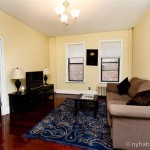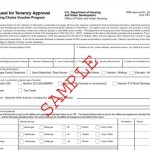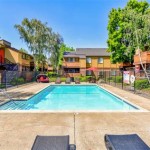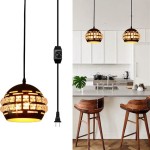Securing Your Privacy: Selecting a Lock for an Outside Bedroom Door
The need for privacy and security within a home is often paramount, and this extends to individual bedrooms. Installing a lock on an outside bedroom door can provide a sense of control, safety, and confidentiality. This article will explore the factors to consider when selecting a lock for an exterior-facing bedroom door, focusing on security levels, lock types, installation considerations, and relevant building codes.
Understanding Security Levels
When choosing a lock, it is crucial to understand the different security levels offered. These levels are typically categorized by grades established by organizations like the American National Standards Institute (ANSI) and the Builders Hardware Manufacturers Association (BHMA). These grades provide a standardized way to assess a lock's resistance to forced entry.
Grade 1 locks represent the highest level of residential security. They are designed to withstand significant force and are often used in commercial settings or areas where security is of utmost importance. While arguably overkill for most residential bedroom doors, they offer maximum peace of mind. Grade 1 locks undergo rigorous testing, including resistance to impacts, torque, and cyclical testing simulating years of use and abuse.
Grade 2 locks provide a balance between security and affordability, making them a common choice for residential applications. They offer a good level of resistance to forced entry, surpassing that of Grade 3 locks. Grade 2 locks are often subjected to testing that includes fewer cycles and lower impact thresholds than Grade 1 locks, but they still provide a solid level of protection against common burglary attempts.
Grade 3 locks offer the lowest level of security and are typically used for interior doors or areas where security is not a primary concern. While they may be suitable for some less vulnerable interior bedroom doors, they are generally not recommended for exterior-facing bedroom doors due to their limited resistance to forced entry. They are more susceptible to being picked or broken into using simple tools.
The choice of security grade should depend on the specific circumstances and the level of perceived risk. Factors such as the location of the bedroom door (e.g., whether it is easily accessible from the street), the presence of other security measures (e.g., an alarm system), and personal preferences should all be taken into account.
Exploring Different Lock Types
Several types of locks are suitable for an outside bedroom door, each with its own advantages and disadvantages. Understanding these differences is essential for making an informed decision.
Deadbolt locks are generally considered the most secure type of lock for exterior doors. They use a solid metal bolt that extends deep into the door frame, making them resistant to kicking and other forms of forced entry. Single-cylinder deadbolts have a key cylinder on the exterior side and a thumb turn on the interior side, while double-cylinder deadbolts require a key to operate from both the inside and outside. Double-cylinder deadbolts can offer added security by preventing someone from breaking a window and unlocking the door from the inside, but they also pose a potential safety hazard in case of fire or other emergency, as a key will always be required to exit. Local building codes often restrict or prohibit double-cylinder deadbolts on egress doors for this reason.
Knob locks, also known as cylindrical locks, feature a latch bolt that retracts when the knob is turned. While they are commonly used on interior doors, they are generally less secure than deadbolts for exterior doors. Knob locks are more vulnerable to being picked or forced open. Some knob locks include a small, integrated locking mechanism, but these are often easily bypassed.
Lever handle locks function similarly to knob locks but use a lever instead of a knob. They can be easier to operate for individuals with limited dexterity or mobility. Like knob locks, they are generally less secure than deadbolts and are not recommended for exterior-facing bedroom doors unless supplemented with a separate deadbolt.
Smart locks incorporate electronic components and can be controlled remotely via a smartphone or other device. They often offer features such as keyless entry, activity logging, and remote locking/unlocking. Smart locks can be integrated with home automation systems to provide enhanced security and convenience. However, they are vulnerable to hacking and technological malfunctions and should be carefully researched and installed by a qualified professional.
Combination locks use a series of dials or buttons that must be set to a specific combination to unlock the door. They eliminate the need for keys, reducing the risk of lost or stolen keys. However, they can be less convenient to use than keyed locks, and the combination must be carefully memorized and protected.
Key Factors for Installation and Building Codes
Proper installation is critical to ensuring that a lock provides the intended level of security. A poorly installed lock can be easily defeated, regardless of its grade or type. It is highly recommended to consult with a qualified locksmith or contractor for installation, especially if the door or frame requires modification.
Before installing a lock, carefully inspect the door and frame to ensure that they are in good condition. Reinforce any weak areas, such as a damaged strike plate or a flimsy door frame. Use long screws to secure the strike plate to the door frame studs, providing a more secure anchor point. Consider installing a metal reinforcement plate behind the strike plate for added strength.
When installing a deadbolt, ensure that the bolt extends fully into the strike plate and that the strike plate is properly aligned with the bolt. The bolt should not be able to be easily retracted by jiggling the door or frame. Follow the manufacturer's instructions carefully to ensure proper installation and operation.
It is crucial to be aware of local building codes and regulations related to door hardware and security. Some jurisdictions may have specific requirements for the type of locks that can be used on egress doors, particularly in multi-family dwellings or rental properties. These codes are often in place to ensure fire safety and prevent obstruction of exits in emergency situations. For example, as mentioned previously, double-cylinder deadbolts may be prohibited on egress doors in some areas.
Furthermore, consider the accessibility requirements of the lock. The Americans with Disabilities Act (ADA) sets standards for accessibility in public buildings and some residential settings. Lever handle locks are often preferred over knob locks in these situations due to their ease of operation for individuals with disabilities. However, even if ADA compliance is not strictly required, choosing an accessible lock can improve the usability of the door for all occupants.
Finally, remember to maintain the lock properly to ensure its continued functionality and security. Regularly lubricate the lock cylinder and bolt mechanism to prevent sticking or corrosion. Inspect the lock for any signs of damage or wear and tear, and replace any worn or broken parts promptly.

Howsarlock Portable Door Lock Defender Security Products

Bedroom Door Lock Bolt Privacy Lumberwizard5 Sawblade

How To Lock A Bedroom Door From The Outside Without Key 3 Simplest Tricks Life

Shared House Bedroom Door Lock Options Airbnb Hosts Forum

Protect Your Privacy How To Lock A Bedroom Door Behind You From The Outside With Screwdriver

One Sided Door Knob Lock For Bedroom Doors From The Outside

New Design Modern Kitchen Accessories Zinc Alloy Outside Rosette Inner Handle Bedroom Door Lock Mortise Lever Made In Com

External Door Handles Internal Locks With Keys Bedroom Lock Key Ebay

Hot Sale Bedroom Modern Style Combination Exterior Door Outside Zinc Alloy Lock Handle Mortise Lever Made In Com

The Best Door Lock Reviews By Wirecutter








